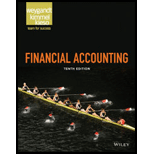
Basic
The mathematical equation, which shows the relationship among the different categories of a
Assets
Assets are the resources owned by a business to carry out production and sales activities. The assets are associated with a future economic value that can be expressed in terms of monetary values. All the assets are meant to provide future services or benefits. Examples include cash, accounts receivable, land, buildings, equipment, vehicles, investments, etc.
Liabilities
Liabilities are the obligations against assets that are to be fulfilled in the future. Most of the businesses borrow money or buy goods and services from a supplier on credit. This incurs a future obligation on the businesses, which is to be fulfilled in the future. Examples include loans payable, interest payable, accounts payable, wages payable, etc.
Stockholders’ equity
The amount invested to a business by its shareholder or the donated capital and earnings from operations less any dividends issued gives the stockholders’ equity. The stockholders’ equity gives the ownership claim on the total assets of a business. The amount left after satisfying the creditors, belongs to the stockholders’ claim on the assets. It also includes common stock and
Whether the given items belongs to an asset, liability, or part of stockholders’ equity.
Want to see the full answer?
Check out a sample textbook solution
Chapter 1 Solutions
Financial Accounting
- Can you help me solve this general accounting problem with the correct methodology?arrow_forwardSalvador Manufacturing estimates that annual manufacturing overhead costs will be $842,400. Estimated annual operating activity bases are direct labor costs of $496,000, direct labor hours of 41,200, and machine hours of 90,400. Compute the predetermined overhead rate for each activity base: a. Overhead rate per direct labor cost b. Overhead rate per direct labor hour c. Overhead rate per machine hourarrow_forwardFinancial Accountingarrow_forward
- Please explain the solution to this financial accounting problem with accurate explanations.arrow_forwardCan you demonstrate the accurate steps for solving this financial accounting problem with valid procedures?arrow_forwardI need help with this financial accounting problem using proper accounting guidelines.arrow_forward

 AccountingAccountingISBN:9781337272094Author:WARREN, Carl S., Reeve, James M., Duchac, Jonathan E.Publisher:Cengage Learning,
AccountingAccountingISBN:9781337272094Author:WARREN, Carl S., Reeve, James M., Duchac, Jonathan E.Publisher:Cengage Learning, Accounting Information SystemsAccountingISBN:9781337619202Author:Hall, James A.Publisher:Cengage Learning,
Accounting Information SystemsAccountingISBN:9781337619202Author:Hall, James A.Publisher:Cengage Learning, Horngren's Cost Accounting: A Managerial Emphasis...AccountingISBN:9780134475585Author:Srikant M. Datar, Madhav V. RajanPublisher:PEARSON
Horngren's Cost Accounting: A Managerial Emphasis...AccountingISBN:9780134475585Author:Srikant M. Datar, Madhav V. RajanPublisher:PEARSON Intermediate AccountingAccountingISBN:9781259722660Author:J. David Spiceland, Mark W. Nelson, Wayne M ThomasPublisher:McGraw-Hill Education
Intermediate AccountingAccountingISBN:9781259722660Author:J. David Spiceland, Mark W. Nelson, Wayne M ThomasPublisher:McGraw-Hill Education Financial and Managerial AccountingAccountingISBN:9781259726705Author:John J Wild, Ken W. Shaw, Barbara Chiappetta Fundamental Accounting PrinciplesPublisher:McGraw-Hill Education
Financial and Managerial AccountingAccountingISBN:9781259726705Author:John J Wild, Ken W. Shaw, Barbara Chiappetta Fundamental Accounting PrinciplesPublisher:McGraw-Hill Education





